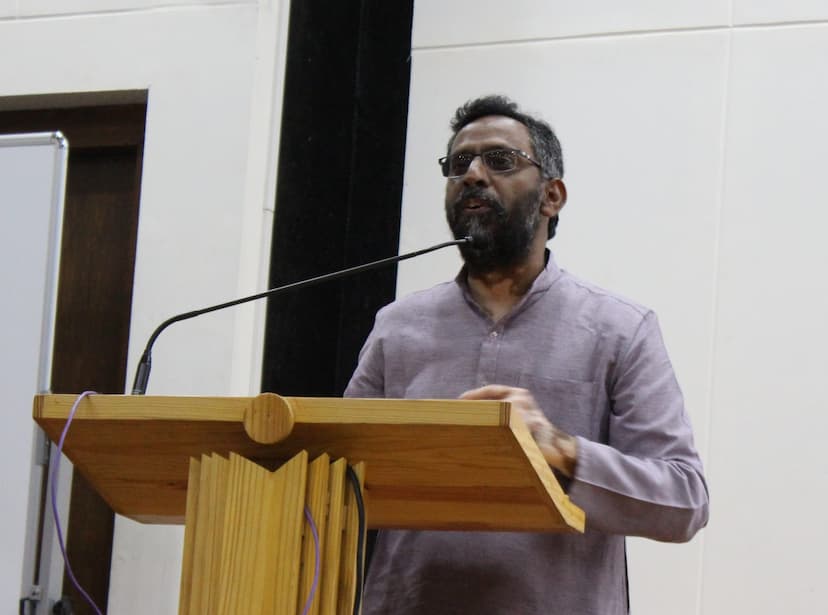IIT H vouches for Bag Valve Masks

IIT H (Indian Institute of Technology Hyderabad) director B.S. Murthy suggested to look at ‘Bag Valve Mask’ as an alternative to ventilators in the treatment of COVID-19 patients.
A Ventilator is a device designed to force breathable air into the lungs of patients who are unable to breathe for themselves.

Modern ventilators are very expensive and sophisticated devices, which are generally found only in the ICUs (intensive care units) of large hospitals.
The most sophisticated computer-controlled ventilators cost around Rs. 40 lakh while more modest foreign-made ones cost around Rs. 15 lakh with Indian-made ventilators costing around Rs. 6 lakh.
Bag Valve Mask can be considered as an alternative, to meet any demand for ventilators, he said, reminding that it is already in consideration in other countries and it is portable and could be used in villages without power supply & inexpensive enough to be manufactured in bulk. Cost estimate is less than Rs 5,000 per device.


Speaking more about this Professor V. Eswaran, Department of Mechanical and Aerospace Engineering, IIT Hyderabad said that bag valve masks are small devices, which are used to deliver breathing support in emergency situations that are inexpensive, easy to produce, and portable – which therefore have every quality that is required in this crisis.
They are most common of these devices is the bag valve mask, often called by the propriety name of ‘Ambu Bag,’ that is used for resuscitation in emergency situations.

B.S. Murthy further said their estimate is that bag valve mask can be manufactured for less than Rs 5000, or one-hundredth the cost of a conventional machine. The cost of manufacturing 6 million of these devices will be probably less than that of the inadequate number of 60,000 conventional machines mentioned above.
The cost is so low that it can be considered a single-use device that will be given over to single patient, and never used again. It needs to be manufactured, however, on an industrial scale, in millions, within a short time of a few months.
There have been several designs proposed within India itself, with IIT Hyderabad having at least one proposed design, he said.
Professor also added that this idea was not new. In the past few weeks, many countries have come up with this idea of manufacture of low-cost ventilators and have even started competitions where the winning design would be declared open-source, which are not patented and can be given free for anyone to adopt. Several designs are already available for 3-D printing, and so can be manufactured on a small scale on a 3-D printer.

Professor Eswaran said this was reassuring, however there are certain caveats also involved in this. And they are that these designs are untested and uncertified.
The other caveats are that even if inexpensive, the designed devices should be capable of continuous and faultless 24×7 operation for at least one month – which requires very high performance both of the design and the manufactured components, while 3-D printing could be part of the manufacturing solution, conventional manufacturing may be much more effective for making the millions of devices in the most rapid and cost-effective way.
‘We are proposing that the Government of India through the Department of Science and Technology/Defence Research and Development Organisation or some other nodal organization constitute a highly empowered taskforce, which will carry out the tasks needed to start the production of these low-cost ventilators, within a maximum time-frame of two months.’

The production rate thereafter would need to be of several lakh units per week, so the preparation has to be done at a war-footing, under the direct scrutiny of the highest levels of Government, said Murthy.
It is estimated that there are around 40,000 ventilators in India at present, mostly in the private hospitals.
The Indian industry has a maximum manufacturing capacity of approximately 6,000 units per month, but even the Indian-made devices use a lot of foreign-made parts whose availability would now be uncertain, when every country would be maximizing their own ventilator production.
The Professors said that assuming a low 6 per cent infection rate, in case COVID-19 advancement in India continues, in the Indian population of 1.3 Billion, that would mean that around 80 million people would get affected.
Of these 80 million, at least 5 per cent (4 million patients) would require ventilators. Each of these 4 million patients would need the ventilators for around 21 days, thereby blocking that machine for at least that amount of time.
Further, the machines are not portable and are found only in high-end hospitals in large cities, so patients from villages would need to be transported to these cities, which would be a logistics problem of unimaginable complexity.
It is quite clear that even a mild 6 per cent Stage-3 would overwhelm the country’s capacity to a devastating degree. Even if the Indian Industry was at peak production, it could manufacture only another 60,000 machines in the next 10 months, at a cost of Rs. 3,600 crore.
Both the professors say therefore, the total number of ventilators would barely be 1 lakh devices – at a time when millions of machines may be needed. We cannot depend of the conventional ventilators for a solution to this crisis.
Indian Institute of Technology Hyderabad (IIT H) is one of the six new Indian Institutes of Technology established by the Government of India in 2008. In a short span of about a decade, the institute built on an imposing 570-acre campus and has been ranked among the top ten institutes for four consecutive years in the National Institute Ranking Framework (NIRF) released by the Ministry of Human Resource Development (MHRD), Government of India.
IIT H was also ranked #10 in the first edition of Atal Ranking of Institutions on Innovation Achievements (ARIIA) introduced this year by MHRD to systematically rank all major higher educational institutions and universities in India on indicators related to ‘Innovation and Entrepreneurship Development’ among students and faculties. IIT H has close to 210 full-time faculty, 2,855 students of whom 20 per cent are women, nearly 200 state-of-the-art laboratories and five research and entrepreneurship centers.
S Vishnu Sharmaa now works with collegechalo.com in the news team. His work involves writing articles related to the education sector in India with a keen focus on higher education issues. Journalism has always been a passion for him. He has more than 10 years of enriching experience with various media organizations like Eenadu, Webdunia, News Today, Infodea. He also has a strong interest in writing about defence and railway related issues.






